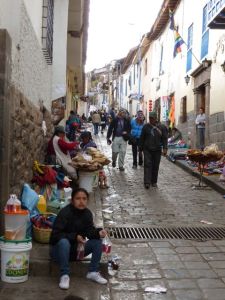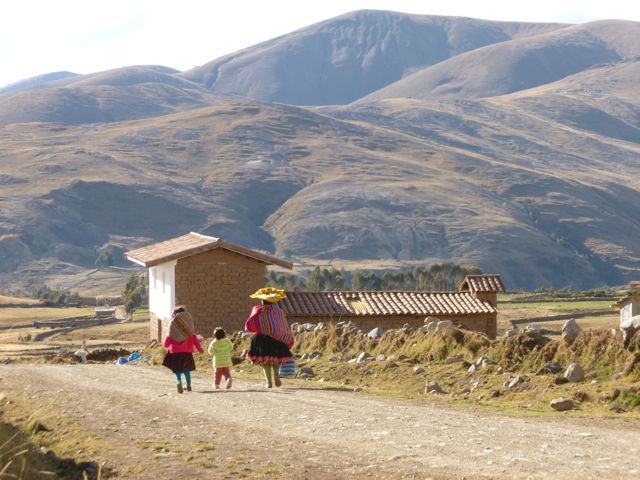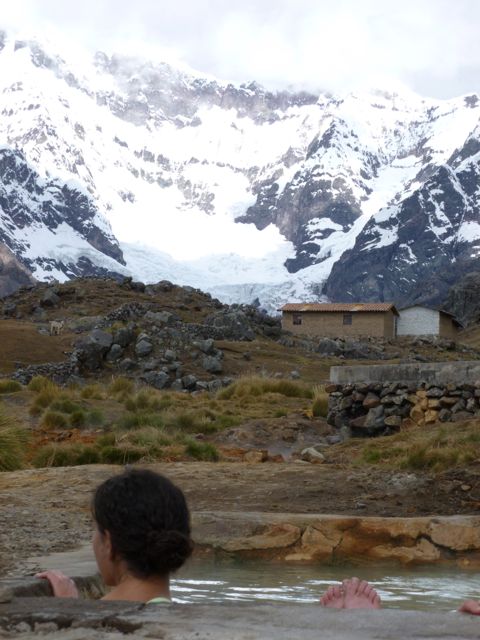
The next few posts are dedicated, much belatedly, to my travels in Peru. I was lucky enough to receive a Nationality Room Scholarship from the University of Pittsburgh this summer–The George F. and Mary Ann McGunagle Memorial Award–in order to research and write about the Interoceanic Highway. The highway runs from Peru’s Pacific coast eastward through the cities of Cusco in the Andes and Puerto Maldonado in the Amazon, and through Brazil all the way to Rio de Janeiro on the Atlantic coast–the project was an agreement between Peruvian president Alejandro Toledo and Brazilian president Lula, with Brazil funding most of the construction.
They finally finished the last pieces of the new highway last year–a bridge spanning across the Madre de Dios River in PuertoMaldonado.There was much talk of the highway and its impacts when I was in Peru six years ago, and I proposed to return to Peru to travel on the highway between Cusco and the Brazilian border to document how the highway is changing southern Peru. The final outcome of the project will be a longform nonfiction article, somewhere between 8,000 and 10,000 words. The next few posts are meant to provide an overview of the trip, where I went and the sort of work I did, rather than representing the final product of my travel research. I have just a few days left in Peru, and I have much translating and transcribing of interviews, and sifting through journal pages to do when I return. I’m definitely going to have much more than the 10,0000 word article that I proposed–and I already have a few incipient essays budding that I’m sure will show up on Vela.
Internet isn’t so hot in most parts of Peru, so all of this information is long overdue.

I began my travels in Peru on June 16, starting with a week of intensive Spanish in Lima at the Peruwayna language school. I had an awesome tutor, Mayra, who taught me more about Peruvian politics than she did language (my Spanish skills are still lacking–but that’s likely my own fault, thinking a week would be sufficient to pull it together), by priming me with articles about development in the jungle–including an article about the 2009 Bagua disasater, and an interview with founding president of ProNaturaleza, Marc Dourojeanni, about how to productively cultivate agro-forestry plots in clearcuts in the Amazon. She gave me an overview of Peruvian politics (a disaster), and Peruvians’ general opinions of the government (disappointed and frustrated for the most part)–how they called Alan Garcia, Peru’s last president, the “Caballo Loco” (Crazy Horse) because he rushed into so many plans and fired ministers left and right whenever the public complained about his decisions. And she explained how the Peruvian left had elected Ollanta Humala, the current president, because he promised to make decisions on behalf of people of the sierra (mountains), people of the jungle, poor people, campesinos–i.e., the people of Peru–but that he’s turned out to be a huge disappointment, his decisions serving a small coterie of wealthy people in Lima. Most interesting was this article of his political relationship with Dilma Rousseff, the Brazilian president, and their plans–such as a proposal to build a hydroelectric dam on the Inambari River (a project which was stopped last year, but is now in the works again–the project would displace 4,000 people, cause a new section of highway to be built, and the power produced would mainly serve Brazil)–most of which benefit Brazil more than Peru.
After a full week in Lima I was ready to get out of the city, even though it was just to another bustling Peruvian city. On Saturday June 23rd I flew to Cusco, where I met up with Jason Wells, who was acting as my guide/connection for my first week of travel on the highway. Cusco was a totally different scene–tons and tons of tourists, way more than I remember from 2006, but I actually didn’t mind so much. I remember feeling particularly irked traveling in Peru before because I kept landing on the gringo trail–but perhaps I was expecting it this time. If anything, the city was vibrant.

I was staying in a hotel on the extremely narrow Calle Chaparro–barely wide enough for one car to pass, with sidewalks barely wide enough for one person, high walls on either side and up a steep hill. It was located just uphill from the San Pedro market, and from my room’s window I could see the round turrets of the San Pedro church. I enjoyed anticuchos from a nearby street corner–skewered meat (traditionally heart) on a stick roasted on a small grill right there–typically by an Andean woman–with a whole potato stuck on top.

Ben arrived on the 24th–right in the middle of the Inti Raymi festivals–an enormous and increasingly commercialized part-Incan-part-Catholic festival celebrated in Cusco. We missed the festivities–parades and dances in traditional costume–up at the ruins of Sacsayhuaman, but were greeted by hordes of people exiting–a constant two-hour flow of people heading down hill and police officers ordering people to wear their backpacks on the front because of pickpockets. We were approached by several campesina women and children insisting we hold their baby llama/sheep and pay to take a photo with it. We declined. It felt strange to be caught in the mix of the exiting crowd, even though we hadn’t actually seen anything.
That night we ventured into the Plaza de Armas and mingled with various groups of singers and dancers, people with drums singing songs in Quechua. Totally touristy–but I could tell the performers were completely enjoying themselves, too. Perhaps the festival is now a commercialized phenomenon, but the enthusiasm seemed honest, and it was easy to get caught up in the rhythm of the songs. I read somewhere (wish I could remember where) that Peru is experiencing a resurgence of indigenous pride (there were similar festivities with traditional dress in Puerto Maldonado, too–something I definitely didn’t experience in that city six years ago). The cynical part of me wondered for a minute if this is because it’s what tourists want to see–but I realized that even if that was true, it’s sort of a moot point. What does it matter? And besides, the resurgence is likely much more complicated than that–likely a mix of economic reasons and genuine pride.
Two days later Ben and I were off to do a 4 day backpacking trip around the mountain Ausungate, one of the highest peaks in the region. I’m currently working on a piece for Vela about the trip, which will likely be up some time in September, so I’ll spare the details for now. But here are a few photos so you can get a taste of the bleak terrain, the wild openness of the country, and how it was surprisingly populated with campesino families herding sheep and alpaca.




Amanda enjoying your story look forward to more. We are all well cheers Jason